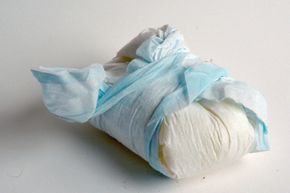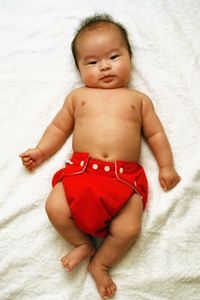So, you're contemplating going au natural -- so to speak -- with your baby's diapers but don't know if there's any benefit for your baby. The truth is: Maybe. Disposable diapers could be bad for your baby if he or she has an allergic reaction to something in the diaper. In that case, cloth diapers would be the way for you to go.
Cloth diapers don't contain chemicals that could lead to an allergic reaction. Disposable diapers, on the other hand, can cause a reaction if your child has a latex allergy. This occurs when chemicals used in the production of latex trigger your child's immune system. The body produces immunoglobulin antibodies in order to combat the latex [source: Mayo Clinic Staff]. Then the antibodies release histamine and other chemicals into the bloodstream, which can cause runny nose, itchy, watery eyes, diarrhea and hives. In extreme cases, latex allergy can lead to anaphylactic shock, which can be deadly. Antihistamine medications can stave off the reaction, though some parents aren't comfortable giving medication to their babies.
Advertisement
Another potential health concern is the absorbent materials used in disposable diapers. Sodium polyacrylate, the gel-like absorbent in the pad, was removed from use in tampons in 1985 due to its possible link to toxic shock syndrome, a rare life threatening bacterial infection [source: Citrinbaum].
Some disposable diapers have an absorbent center wrapped with a thin material called polyfilm [source: Gladwell]. The polyfilm is breathable, yet able to hold in moisture, while the absorbent core aids in keeping your baby dry. And while this chemical does a great job absorbing liquid, it cannot combat diaper rash all on its own. Prolonged exposure to excessive moisture will eventually trump the chemical's absorbing power and feces is no match for any diaper, disposable or cloth.
Diaper rash can occur regardless of whether you use cloth or disposable diapers. Diaper rash is most commonly caused by the skin rubbing against a wet diaper [source: WebMD]. Diaper rash can also be attributed to the acid and bacteria in urine and feces and can even be linked to cleaning wipes used when changing your baby's diaper.
Advertisement


